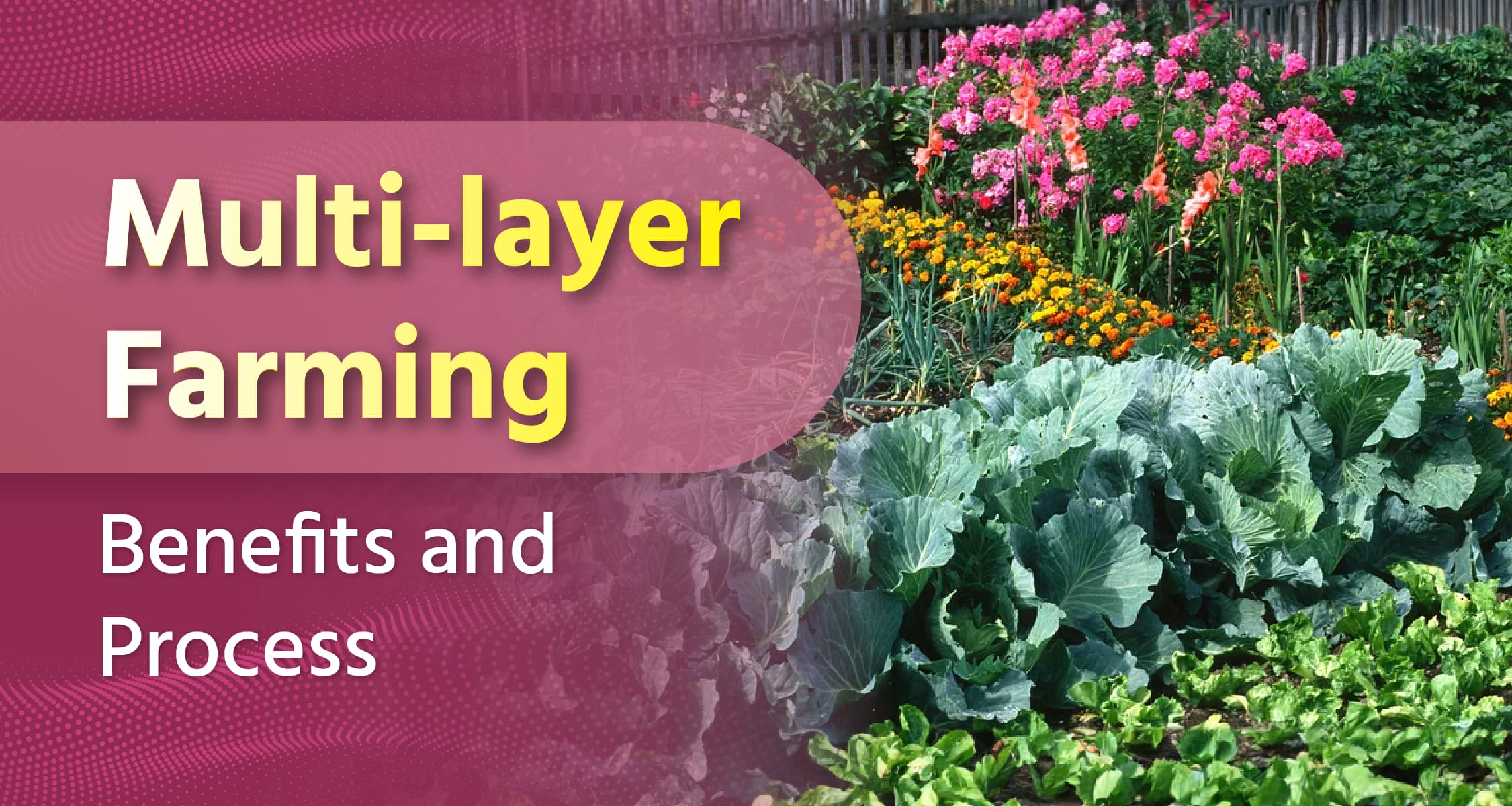Multi-layer Farming: Benefits and Processes

Agriculture is a crucial part of our country's economic and social structure. Gradually, new innovations are being made in agriculture. To improve crop yields and increase farmers' income, there is also an emphasis on adopting some traditional methods. In this context, a unique and progressive agricultural system called multi-layer farming is emerging, which is an excellent way to grow different crops simultaneously in the same area. Through this post, we will learn about the importance of multi-layer farming, its benefits, processes, and crop selection. Additionally, we will explore multi-layer vegetable farming, multi-layer farming crops, and the multi-layer farming model.
What is Multilayer Farming?
Multilayer farming began in Europe. It is a robust agricultural system where farmers can cultivate different types of crops simultaneously on the same field. This is an excellent method of farming that is both safe and sustainable, offering various benefits. With this technique, farmers can achieve higher productivity and increased income.
Benefits of Multilayer Farming
- Increased Productivity: Multilayer farming allows farmers to harvest multiple crops simultaneously, which boosts productivity and provides higher income.
- Nutritional Diversity: Growing various crops at the same time enhances the diversity of food, ensuring essential nutrition and improving public health.
- Reduced Pollution: Multilayer farming reduces the use of water, energy, pesticides, and fungicides, leading to decreased pollution and preserving natural balance.
- Water Conservation: This system involves sowing multiple types of crops in the same field, saving water during irrigation, and ensuring its efficient use.
- Weed Control: Growing multiple crops together leaves less empty space, reducing the area for weeds to grow and thereby decreasing weed problems.
- Improved Economic Condition: Producing different types of crops in the same area helps farmers remain economically secure. Even if one crop has lower yields, they can still profit from other crops.
- Knowledge of New Techniques: Practicing multilayer farming exposes farmers to new technologies and crop management practices, enabling them to perform better in agriculture and gain higher profits.
How to do Multi-layer Farming?
- Field Selection and Preparation: First, select the field. Then plow it and mix cow dung manure or compost. Use nitrogen, potash, and phosphorus-based on soil testing and the selected crops.
- Seed Selection and Treatment: Choose the seeds of the crops you intend to cultivate and treat the seeds. Seed treatment can protect crops from seed-borne or soil-borne diseases.
- Sowing/Transplanting: Plant the seeds or seedlings according to different layers. Provide support for vine crops.
- Irrigation Management: Timely irrigation is crucial for crop growth. Irrigation is particularly important in multi-layer farming. This method allows for the simultaneous irrigation of all crops, reducing the need for excessive watering.
- Weed Control: Weeds absorb the nutrients present in the soil, hindering proper plant growth. Therefore, controlling the proliferation of weeds is very important.
- Disease and Pest Control: Pest and disease outbreaks can cause significant damage to crops, ultimately reducing the quality and quantity of harvests. Hence, controlling diseases and pests is essential for a good crop yield.
- Harvesting: Harvest the crops when they are ripe or ready. Keep in mind that not all layers' crops will be ready at the same time. Therefore, harvest the crops from the layer that is ready first.
Crop Selection for Multi-Layer Farming
- First Layer: If large plants are planted in the first layer, the other layers will become ineffective. According to agri-experts, for the first layer of multi-layer vegetable farming, select crops that grow underground. Examples include turmeric, ginger, peanuts, radishes, carrots, and similar crops.
- Second Layer: For the second layer, choose crops that require shallow depth and have low height. This includes various leafy greens and vegetables.
- Third Layer: In the third layer, slightly taller plants or trees can be planted. This could include papaya or other fruit-bearing plants.
- Fourth Layer: In the fourth layer, plant vine crops such as bitter gourd, cucumber, squash, and bottle gourd. These plants will absorb nutrients from the soil and will grow upwards with the support of a trellis or scaffold.
Training for Multi-Layer Farming
- Farmers interested in multi-layer farming can obtain information about this technique from experts at various related agricultural centers in their districts. By understanding the intricacies of this method from agri-experts, you can earn a good profit using this technique.
- In addition, you can also receive training from farmers in your vicinity who are already practicing this method.
- There are also many videos available on YouTube about this method, where you can get more information.
Have you ever cultivated using the 'multi-layer farming' method? Share your answers and experiences with us in the comments. For more information like this, follow the 'Krishi Tech' channel immediately. Also, don't forget to like and share this post.
Frequently Asked Questions (FAQs)
Q: What is a multi-layer farming?
A: Multi-layer farming can be defined as an integrated agricultural system where more than one crop can be successfully cultivated simultaneously on the same piece of land.
Q: How much does it cost to start multi-layer farming?
A: The cost of multi-layer farming can vary based on the region. Additionally, costs may fluctuate depending on the types of crops being cultivated.
Q: Which crops can be grown in multi-layer farming?
A: Generally, vegetables, fruits, and flowers are cultivated in multi-layer farming. In addition, pulses, oilseeds, and medicinal crops can also be grown using this agricultural system.
जारी रखने के लिए कृपया लॉगिन करें

फसल चिकित्सक से मुफ़्त सलाह पाएँ
